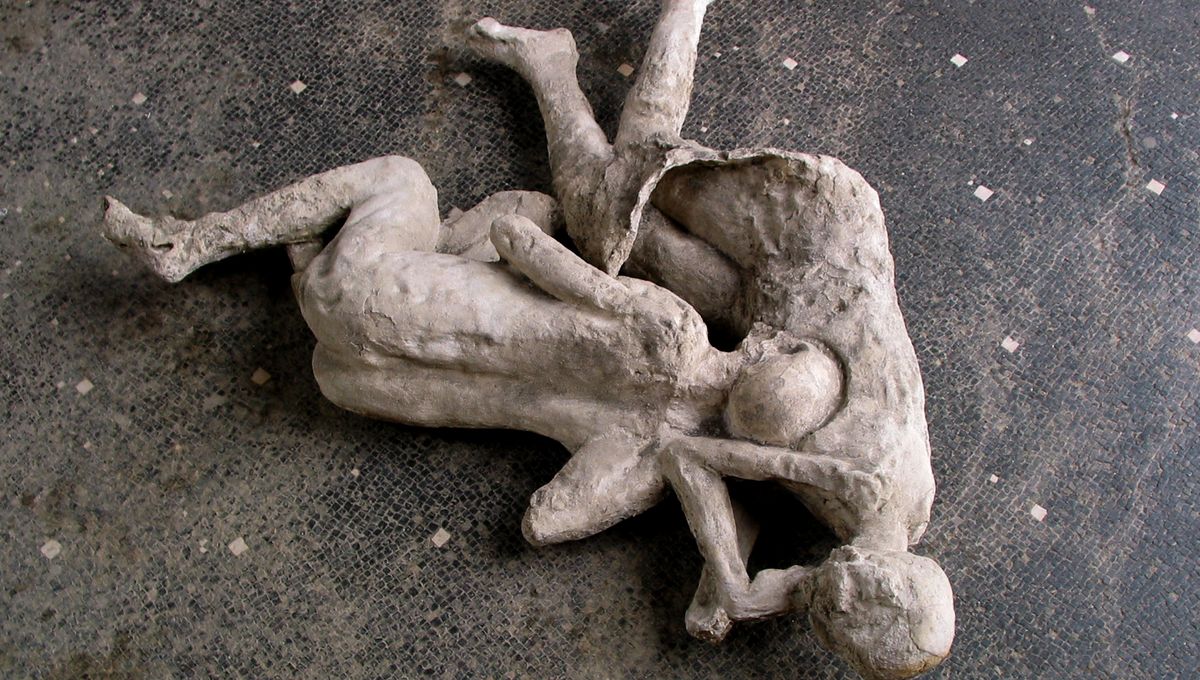
The surprising identities of some of the doomed inhabitants of ancient Pompeii have been revealed by a new analysis of their DNA, re-writing the life histories of these unfortunate souls. Based on their findings, the study authors suggest that certain long-standing narratives regarding some of the Roman city’s residents are wide of the mark, and are probably based on erroneous modern assumptions about how people lived in the past.
Following the catastrophic eruption of Mount Vesuvius that annihilated Pompeii in 79 CE, the bodies of numerous victims became encased in ash, thus preserving their postures at the moment of their horrific deaths. Over the centuries, the soft tissues of the deceased decayed, leaving hollow cavities that researchers were later able to fill with plaster in order to create casts of these long-dead Pompeiians.
It happens very often that when we analyze individuals who lived in the past, we often discover ’embarrassing’ situations.
Professor David Caramelli
From the small fragments of skeletal material still present within these casts, the authors of the new study were able to extract the DNA of 14 different individuals, which they then analyzed in order to learn more about their ancestry, sex, and genetic relationships.
“We show that the individuals’ sexes and family relationships do not match traditional interpretations, exemplifying how modern assumptions about gendered behaviors may not be reliable lenses through which to view data from the past,” write the researchers. “For instance, one notable example is the discovery that an adult wearing a golden bracelet and holding a child, traditionally interpreted as a mother and child, were an unrelated adult male and child,” added study author David Reich in a statement.
The pair were discovered in 1974 inside a dwelling that became known as the House of the Golden Bracelet, and were thought to have been part of a family of four. However, the new analysis has revealed that the two adults and two children found in the house were all unrelated males.
In an email to IFLScience, co-author David Caramelli explained that it came as no shock to learn that previous assumptions turned out to be so inaccurate. “It happens very often that when we analyze individuals who lived in the past, we often discover ’embarrassing’ situations,” he said.
Despite this, Caramelli revealed that “it was certainly a surprise to discover that the family was not a family and that at least one of the two girls was a boy.”
Meanwhile, in a building called the House of the Cryptoporticus, a pair of individuals who died in an embrace had previously been interpreted as sisters, yet turned out to include at least one male. “These discoveries challenge longstanding interpretations, such as associating jewelry with femininity or interpreting physical closeness as an indicator of biological relationships,” write the researchers.
A deeper look at the genetic heritage of the ancient cadavers provided yet more surprising insights, shedding light on the global connections of ancient Rome. “Overall it was interesting that they were mainly descended from recent immigrants from the eastern Mediterranean, highlighting the cosmopolitan nature of the Roman Empire,” Caramelli told IFLScience.
He and his colleagues are now analyzing the DNA of a further 168 individuals at Pompeii, the results of which “will offer us a much more precise and complete population panorama,” he says.
The study is published in the journal Current Biology.
Source Link: Pompeii Victims Weren’t Who We Thought They Were, DNA Analysis Reveals